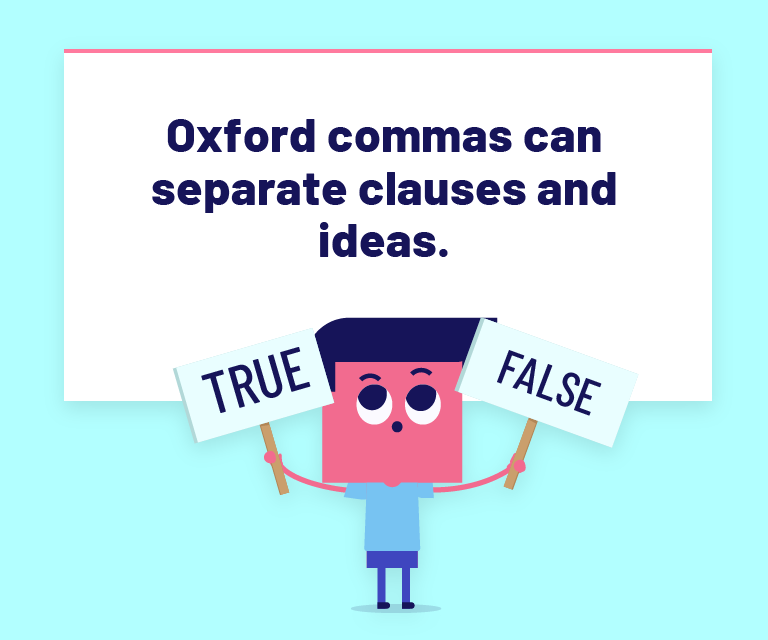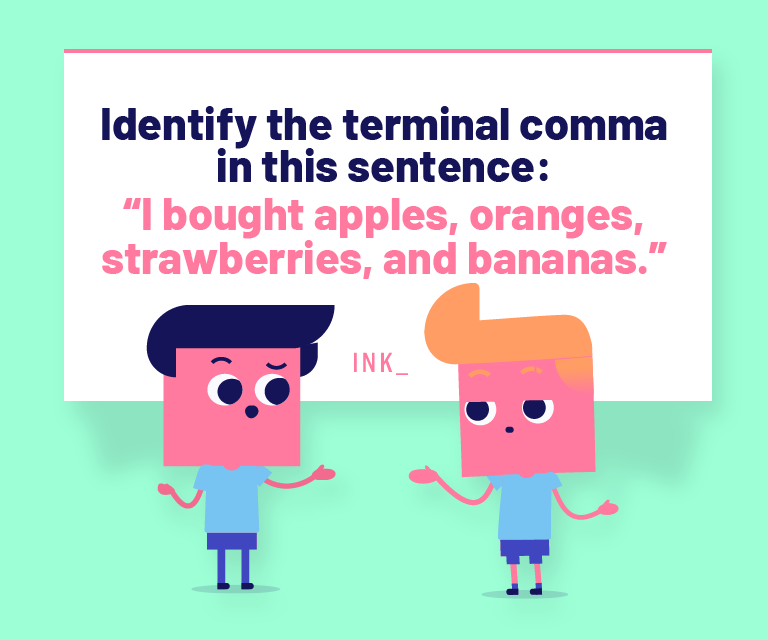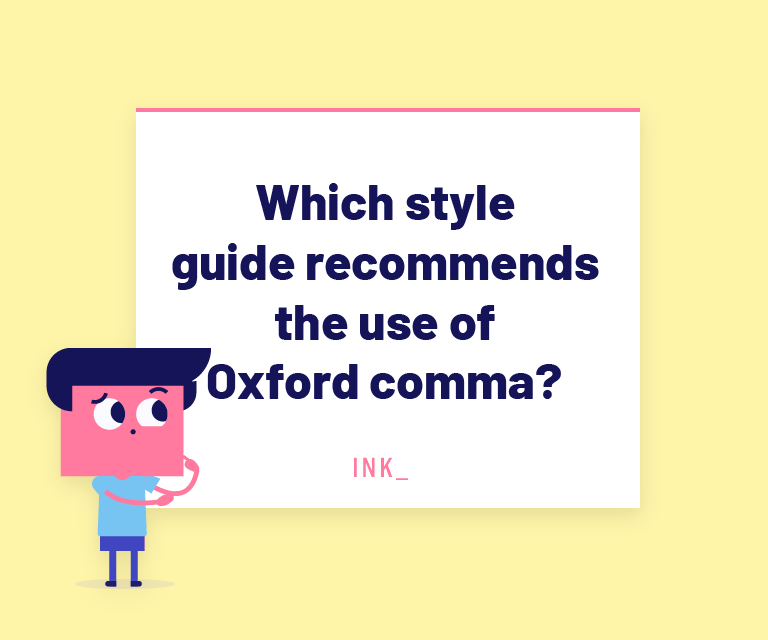Main Oxford Comma Takeaways:
- The Oxford comma is the final comma in a serial list, used just before the conjunction.
- It’s also known as a serial or terminal comma.
- The Chicago Manual of Style says to always use the Oxford comma.
- The AP Stylebook says not to use it unless necessary for clarity.
The Oxford comma is one of grammar’s biggest ongoing debates. This controversial punctuation mark, which separates the penultimate item in a written list from the conjunction, has left many grammarians disagreeing over its use. In this post we will discuss what an Oxford comma or serial comma really is, the rules around its usage, and when not to use it.


What is an Oxford Comma?
An Oxfordcomma or serial comma is the final comma normally used in a list of three or more items. Sometimes, grammarians also refer to it as a terminal comma.
In the example above, the terminal comma is the comma that follows dry vermouth which is the comma before the conjunction and.
Technically, using an Oxford comma is optional in American English. That’s because it’s use is stylistic and not grammatical. Meaning, you can use it depending on the style guide that you’re following. The AP Style guide — the one followed by most newspapers — doesn’t require the use of an Oxford comma.
Now, before we explore this controversial comma further, let’s first understand what a comma truly is.
What is the Difference Between an Oxford Comma and a Regular Comma?
A comma is a mark of punctuation that writers use to indicate divisions in sentences. For instance, when setting off words, phrases, or clauses that require a slight pause. Aside from letting your readers know when to pause and take a breath, commas also give order to the sequential elements of your sentence. Technically, the Oxford comma is no different since it’s still a comma. However, unlike the regular comma that holds grammatical significance, the use of an Oxford or serial comma is a stylistic choice.
Other Uses:
When writing out dates in month-day-year format, commas are typically used to set off the date. Commas can also be used when expressing large numbers, breaking them into three-digit blocks, so they’re easier to read.
Although a comma can add structure and clarity to a sentence, it’s one of the most misused and misunderstood forms of punctuation. Thankfully, there are some basic rules to help you understand when to use a comma.


Why is the Oxford Comma Important?
It might seem hard to believe, but the placement of a simple comma can alter the meaning of a sentence. By using a serial comma in lists, you can potentially avoid misreadings and misunderstandings.
Yesterday, Peterwent to lunch with his roommates, Stephen King and a world-famous cat trainer.
Written this way, you could infer that Peter’s roommates are actually Stephen King and a world-famous cat trainer. By adding a terminal comma, the sentence becomes clearer.
In this second example, there’s no confusion. We now understand that Peter isn’t rooming with the king of horror and the bearer of many scars. He’s just inviting them to join him and his roommates for lunch.
Drivers for Oakhurst Dairy won a legal battle against the company in 2017 due to Oxford comma omission. The company argued it shouldn’t pay these drivers overtime, but employees said a missing comma made guidelines confusing.


Are Oxford Commas Grammatically Correct?
Whether or not to include a serial comma is more of a stylistic choice. Some might say that Oxford commas are grammatically optional. If you’re writing for a company or organization, the using a serial comma likely depends on the style guide you’re following. For example, AP Stylebook doesn’t use the Oxford comma unless it’s absolutely essential to preserve a sentence’s meaning. On the other hand, The Chicago Manual of Style advocates for always using a serial comma. If you’re your own boss, then the ultimate comma decision rests entirely with you.
Although some people wonder if Oxford commas are grammatically correct, the answer isn’t black and white.
Why Shouldn’t You Use the Oxford Comma?
Over the years, the Oxford or serial comma has had more than its fair share of detractors, many fighting fiercely against its use.
Although some grammarians believe that it can provide much-needed clarity in a written list, others argue that it’s better to just restructure the sentence.
Using the example from the last section, the sentence could easily be rewritten to clarify its meaning.
With a small change of wording, the sentence becomes less confusing. This approach argues that the Oxford comma is a lazy way of solving a problem and renders it unnecessary.


Serial Comma Meets Social Media
In 2003, Eats, Shoots & Leaves by Lynne Truss hit bookstore shelves in the United Kingdom. By 2004, it was a hit in the United States, as well.
The book title’s clever play on words and amusing panda-themed cover illustration introduced the public to the intricacies of the Oxford comma.
Ever since, people have been exploring the humorous ways that this tiny punctuation mark can change a sentence’s entire meaning.
Many examples have even found their way onto social media platforms, such as Facebook and Twitter, through memes. This viral content pairs eye-catching visuals with verbal concepts to make a statement or point. In the case of the serial comma, it’s often used to make a joke about bad punctuation.
Since its origin at the Oxford University Press, the Oxford comma has been a source of ongoing controversy. For more than a century, grammarians have argued about whether this comma is essential or should be abandoned to the annals of history.
Proponents believe that this serial comma, which belongs after the penultimate item in a list, is necessary for clarity. Detractors think it represents nothing more than an excuse for lazy writing.
Oxford Comma Quick Grammar Quiz
Question #1


Please select 2 correct answers
The answers are A and C. The Oxford comma is also known as the serial or terminal comma.
Question #2


The answer is FALSE. An Oxford comma refers to the final comma in a list of three or more things.
Question #3


The answer is C. A serial comma goes after the penultimate item on the list.
Question #4


The answer is A. The Chicago Manual of Style advocates its use.
